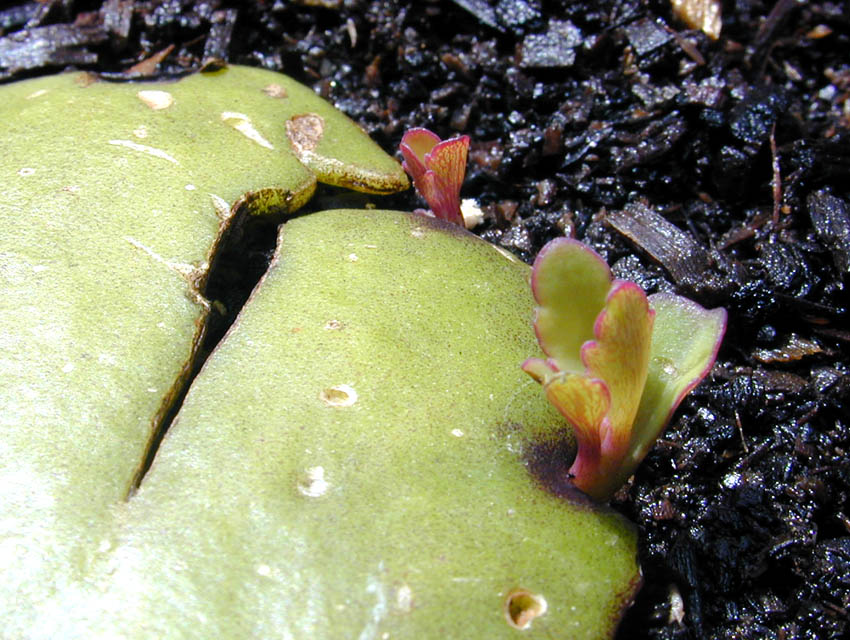
Reproduction
Reproduction (or procreation or breeding) is the biological process by which new individual organisms – "offspring" – are produced from their "parent" or parents. There are two forms of reproduction: asexual and sexual.
For other uses, see Reproduction (disambiguation).
In asexual reproduction, an organism can reproduce without the involvement of another organism. Asexual reproduction is not limited to single-celled organisms. The cloning of an organism is a form of asexual reproduction. By asexual reproduction, an organism creates a genetically similar or identical copy of itself. The evolution of sexual reproduction is a major puzzle for biologists. The two-fold cost of sexual reproduction is that only 50% of organisms reproduce[1] and organisms only pass on 50% of their genes.[2]
Sexual reproduction typically requires the sexual interaction of two specialized reproductive cells, called gametes, which contain half the number of chromosomes of normal cells and are created by meiosis, with typically a male fertilizing a female of the same species to create a fertilized zygote. This produces offspring organisms whose genetic characteristics are derived from those of the two parental organisms.
Life without
The existence of life without reproduction is the subject of some speculation. The biological study of how the origin of life produced reproducing organisms from non-reproducing elements is called abiogenesis. Whether or not there were several independent abiogenetic events, biologists believe that the last universal ancestor to all present life on Earth lived about 3.5 billion years ago.
Scientists have speculated about the possibility of creating life non-reproductively in the laboratory. Several scientists have succeeded in producing simple viruses from entirely non-living materials.[25] However, viruses are often regarded as not alive. Being nothing more than a bit of RNA or DNA in a protein capsule, they have no metabolism and can only replicate with the assistance of a hijacked cell's metabolic machinery.
The production of a truly living organism (e.g. a simple bacterium) with no ancestors would be a much more complex task, but may well be possible to some degree according to current biological knowledge. A synthetic genome has been transferred into an existing bacterium where it replaced the native DNA, resulting in the artificial production of a new M. mycoides organism.[26]
There is some debate within the scientific community over whether this cell can be considered completely synthetic[27] on the grounds that the chemically synthesized genome was an almost 1:1 copy of a naturally occurring genome and, the recipient cell was a naturally occurring bacterium. The Craig Venter Institute maintains the term "synthetic bacterial cell" but they also clarify "...we do not consider this to be "creating life from scratch" but rather we are creating new life out of already existing life using synthetic DNA".[28] Venter plans to patent his experimental cells, stating that "they are pretty clearly human inventions".[27] Its creators suggests that building 'synthetic life' would allow researchers to learn about life by building it, rather than by tearing it apart. They also propose to stretch the boundaries between life and machines until the two overlap to yield "truly programmable organisms".[29] Researchers involved stated that the creation of "true synthetic biochemical life" is relatively close in reach with current technology and cheap compared to the effort needed to place man on the Moon.[30]
Lottery principle
Sexual reproduction has many drawbacks, since it requires far more energy than asexual reproduction and diverts the organisms from other pursuits, and there is some argument about why so many species use it. George C. Williams used lottery tickets as an analogy in one explanation for the widespread use of sexual reproduction.[31] He argued that asexual reproduction, which produces little or no genetic variety in offspring, was like buying many tickets that all have the same number, limiting the chance of "winning" – that is, producing surviving offspring. Sexual reproduction, he argued, was like purchasing fewer tickets but with a greater variety of numbers and therefore a greater chance of success. The point of this analogy is that since asexual reproduction does not produce genetic variations, there is little ability to quickly adapt to a changing environment. The lottery principle is less accepted these days because of evidence that asexual reproduction is more prevalent in unstable environments, the opposite of what it predicts.[32]